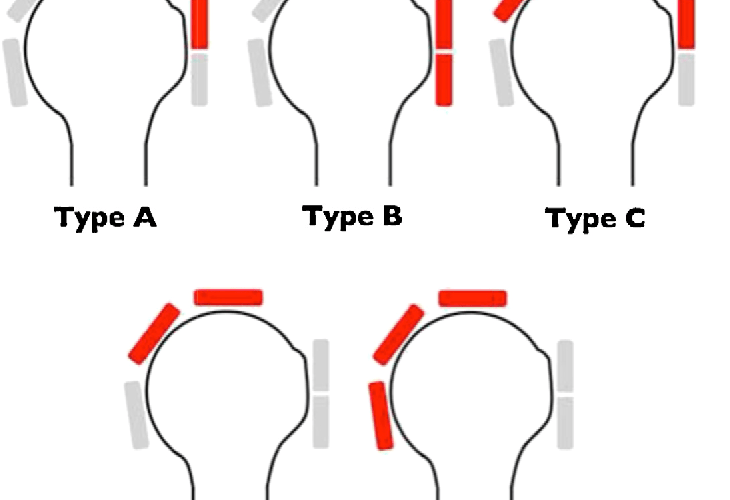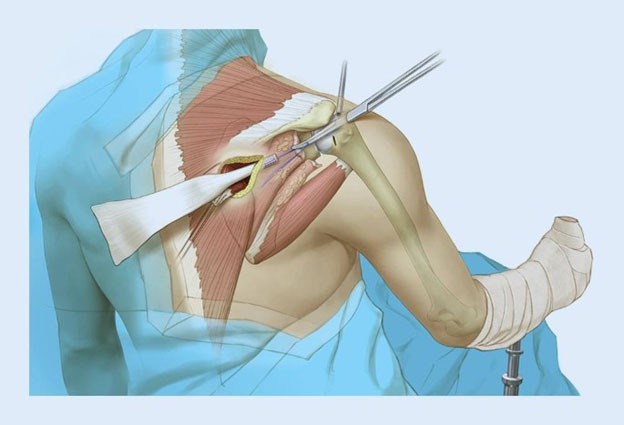- July 22, 2024

What is a SpeedBridge rotator cuff repair?
Rotator cuff injuries are very common, specifically among athletes and those involved in overhead activities. The rotator cuff is a group of muscles and tendons that stabilizes the shoulder joint and facilitates a wide range of motion. Sometimes, these tendons are torn, either fully or partially, requiring surgical treatment to restore function and relieve pain.SpeedBridge rotator cuff repair is one such advanced and latest surgical procedure for repairing rotator cuff injuries using a SpeedBridge system. Understand the SpeedBridge method The SpeedBridge system is a knotless double-row method designed to offer a strong and highly stable fixing of torn tendons of ...

Different kinds of rotator cuff surgery
Rotator cuff injuries are common and chances of developing them increase as one ages. These injuries can also affect people having jobs that need repetitive overhead movements, such as carpenters and painters. Most people with rotator cuff injuries do not require surgery. Yet, it is recommended when a person has moderate to significant pain and feebleness in the shoulder or does not get benefits from any kind of non-surgical treatment. Surgery is also required when the rotator cuff injury is a tear caused by some new injury. Types of rotator cuff surgery There are three different kinds of surgery options ...

Types of Rotator cuff injuries
Rotator cuff injuries are a range of different conditions that affect the muscles and tendons that are responsible for stabilizing the shoulder joint. These injuries vary in their severity and appearance and have an impact on movement, overall strength and day-to-day activities. A proper understanding of the types of rotator cuff injuries is important for the right diagnosis and planning treatment. Different types of rotator cuff injuries Tendinitis Tendinitis or rotator cuff tendonitis is inflammation of the tendons of the rotator cuff, which is caused because of repetitive overhead activities. It is most often characterized by shoulder pain and swelling, ...
The Difference Between Rotator Cuff Tears and Shoulder Tendonitis
Many people suffer from shoulder pain at some point in life either because of repetitive motion, lengthening the shoulder outside the range, or any injury. But when this pain is managed, it can have a substantial impact on your day-to-day life. For treatment, it is vital to recognize the source of this problem. There are many causes of shoulder pain; it could be the rotator cuff, which is highly prone to tears, or a condition called shoulder tendonitis, one of the major sources of these problems. A proper understanding of those two problems can assist you and your doctor in ...

Types of Shoulder Fractures
Shoulder fracture, also called broken shoulder, refers to broken bone in the shoulder. It occurs because of any accidental fall or collision. The shoulder is a complicated joint that links your body to your arm. It has numerous parts, which include the humerus or the upper bone; the scapula, or the shoulder blade bone; and the clavicle, or the collarbone. In the upper end of the humerus, there is a ball-like shape that is connected to the scapula socket, known as the glenoid, thereby forming the ball and socket. A shoulder fracture occurs when there is a crack or break ...

Arthroscopic Lower Trapezius Transfer – Shoulder
Arthroscopic lower trapezius transfer for shoulder repair is a surgical process for restoration of shoulder functioning mainly in patients suffering from irreversible rotator cuff tears or substantial shoulder instabilities. This technique makes use of the lower trapezius muscle, which is structurally and functionally suited for compensating poor shoulder musculature, especially the external rotators as well as the posterior rotator cuff. The trapezius muscle is a large and triangle-shaped muscle bridging the back of the neck and the upper thorax. It has three parts – upper, middle, and lower. The lower part starts from the thoracic vertebrae and enters into the ...



